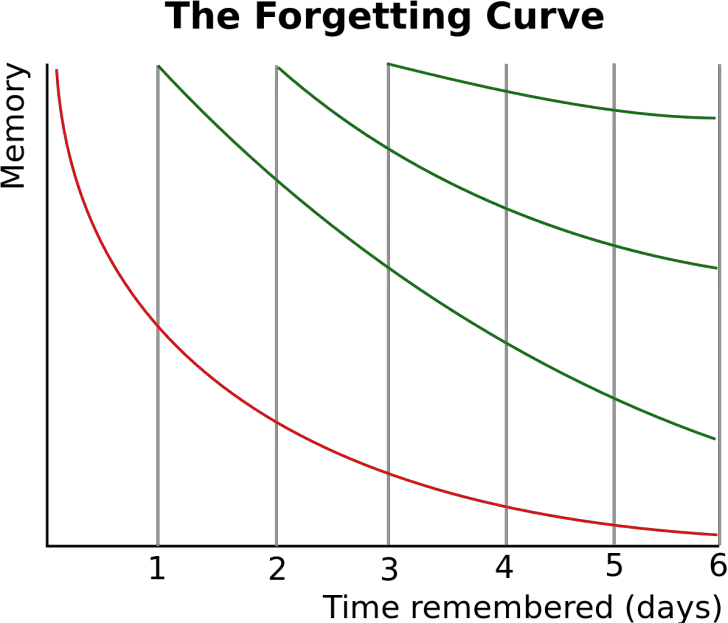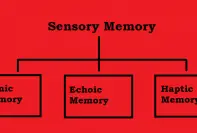Ebbinghaus forgetting curve describes the decrease in ability of the brain to retain memory over time. The issue was hypothesized by Hermann Ebbinghaus in 1885, which is why it’s called Ebbinghaus forgetting curve.
The theory is that humans start losing the memory of learned knowledge over time, in a matter of days or weeks, unless the learned knowledge is consciously reviewed time and again. A related concept to the forgetting curve is strength of memory, which states that the time period up to which a person can recall any memory is based on the strength of the particular memory.
History
The first study to hypothesize the forgetting curve was done in 1885. Mathematically, the formula that can describe the phenomenon is
R = e-t/s
Here,
R refers to memory retention, S refers to relative strength of memory and t refers to time.
Hermann published is first study about the forgetting curve in German, which was later translated to be called Memory: A contribution to Experimental Psychology.
Ebbinghaus conducted a series of tests on himself, which included memorization and forgetting of meaningless three letter words. Ebbinghaus memorized different nonsense words such as “WID”, “ZOF and “KAF”, and then he tested himself to see if he could retain the information after different time periods. The results thus obtained were plotted in a graph, which is now referred to as the forgetting curve.

Ebbinghaus found the forgetting curve to be exponential in nature. Memory retention is 100% at the time of learning any particular piece of information. However, it drops rapidly to 40% within the first dew days. After which, the declination of memory retention slows down again.
In simple words, forgetting curve is exponential because memory loss is rapid and huge within the first few days of learning. But, the rate of memory loss decreases and the rate of much forgetting are much slower from then on.
Ebbinghaus also discovered another phenomenon called overlearning during his study on forgetting curve. The basic idea is that if you practiced something more than what is usually required to memorize it, the effect of overlearning takes place. This means that the information is now stored much more strongly and thus the effects of forgetting curve for overlearned information is shallower.
Rate of Forgetting
There are various factors that can affect the rate of forgetting. Some of which are
- Meaningfulness of the information
- The way it is represented
- Physiological actors (stress, sleep, etc)
The rate of forgetting isn’t same between every one. Herman Ebbinghaus pointed out that different in memory performance between two different individuals can be explained by mnemonic representation skills.
Increasing Memory Strength
Ebbinghaus hypothesized that difference in memory strength between individuals could be somewhat triumphed over by simple training in mnemonic techniques. Two of the methods he asserted to be among the best ways to increase strength of memory are:
- Better memory representation (e.g. with mnemonic techniques)
- Repetition based on active recall (esp. spaced repetition)
He believed that each repetition in learning leads to increase in the interval for when the next repetition is required. It was later discovered that higher original learning also lead to slower loss in memory.
For instance, taking time to repeat information every day during exams decreases the effects of the forgetting curve. According to research, information should be repeated within the first 24 hours of learning to reduce the rate of memory loss.
Note: Not all memories follow the forgetting curve as there could be various other factors in play, such as noise and other environmental factors. Because of their influence on what information is remembered, not all memories are affected by detrimental effects of interference.
Critical Evaluation of the Hypothesis
The greatest debate regarding the forgetting curve is about the shape of the forgetting curve when it comes to more significant notable events. Some researchers suggest that memories of shocking events like 9/11 attack, Boston bombing, etc are imprinted in our memory (flash bulb memory).
Others, however, have made an argument that recollections of events recorded in different years have shown sizeable amount of variations.
There have been extensive amount of research in this particular subject matter as it closely relates to eyewitness identification testimony. But, so far, it’s been noted that information gained from eye witness accounts are demonstrably unreliable.



